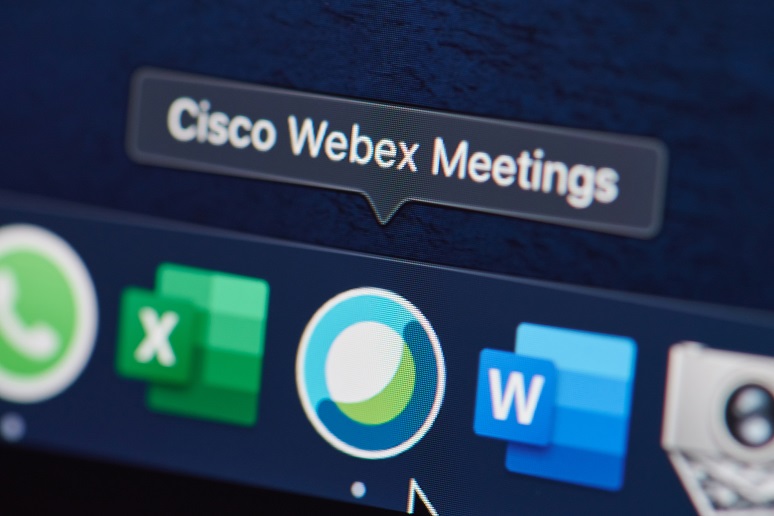Acknowledging that Zoom has "taught [them] a thing or two about the end-user experiences,"
Cisco today unveiled a revamped Webex meeting experience, which includes more virtual backgrounds and a range of added capabilities, Javed Khan, GM and SVP of Cisco Collaboration Group, told No Jitter in a briefing.
Enhanced User Experience, New Features for Webex
At the crux of today’s announcements is a series of changes for the Webex meetings experience, including a simplified button layout and added capabilities, Khan explained. Among the new capabilities are the ability to pin specific users or speakers, a new way to switch between a video and a VoIP call, and the ability to hide non-video participants, Khan said. And for fans of virtual backgrounds, Khan noted that the update includes more of them.
Additionally, within the next month, Webex will receive noise-cancellation capabilities, courtesy of technology from Cisco’s late August acquisition of BabbleLabs, Khan said.
BabbleLabs uses its Clear Edge technology to distinguish human voices and mutes non-voice background noises like dogs barking, loud typing, leaf blowers, and other everyday distractions. Cisco has integrated the BabbleLab noise-canceling technology into Webex as well as into its devices, Khan said.
Webex Room Navigator, Improved Sensor Capabilities
On the hardware side, Cisco announced the Webex Room Navigator, a display device available in versions for use inside and outside of meeting rooms. The outside-the-room version, which can be mounted, allows users to schedule meetings either through a touchpad or voice command and comes with integrated environmental sensors, Khan said. With a slightly different interface, the in-room version allows users to control meeting room devices, make video or voice calls, and share their screens via touchpad or voice commands, Khan said. Both versions will be available in Nov./Dec. 2020, Cisco said.
In addition to the new device, Cisco has enhanced its integrated device sensors to deliver more insight into the office experience. Within Webex Control Hub, admins will be able to view data collected by Webex Room Navigator or other meeting room device sensors to track physical presence, the number of people in a meeting, the ambient noise level, overall noise, and whether people are wearing theirs mask, Khan explained. Sensors for monitoring air quality, lighting levels, temperature, humidity, and room acoustics will be coming next month, Cisco said.
Cisco is also supporting integration support for partner withing Control Hub. These include:
- Appspace — With this application, enterprises can turn [video] devices into digital signage and can be integrated into Cisco Control Hub
- Vyopta — Enhanced analytic capabilities provide insight across in-office and remote environments comprising Cisco and third-party UC technologies
- MazeMap — Leveraging information gathered from the integrated sensors, this app app can identify and route people to the closest available meeting rooms










